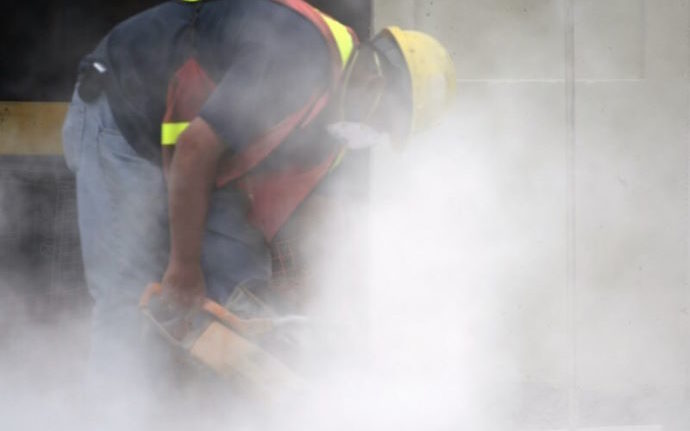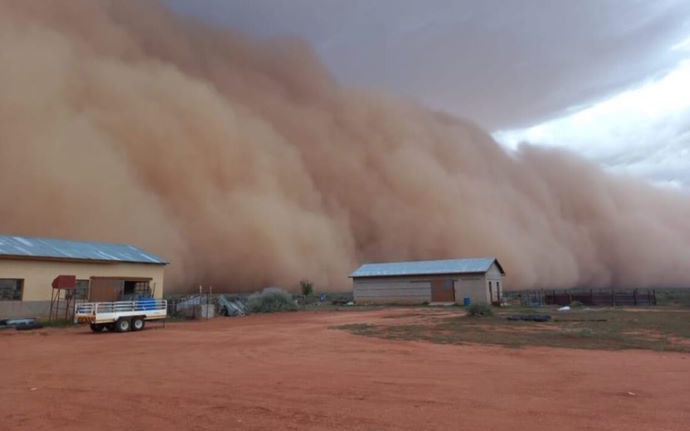First responders come across many situations where dust is present, such as factories, dusty roads, concrete-cutting facilities and even workshops.
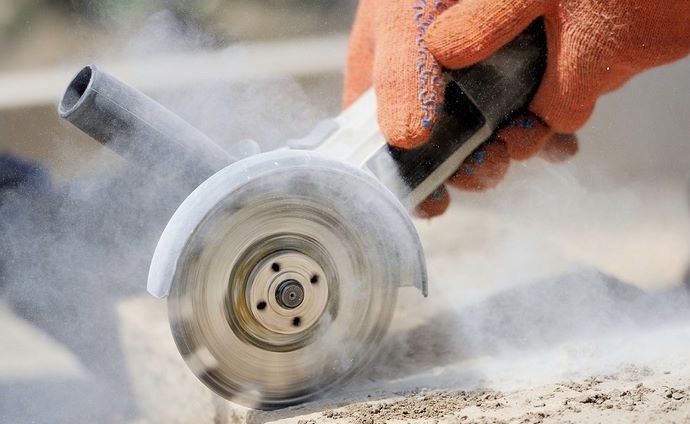
Picture: Arrive Alive
Dust is found in many places on a job site and can be hazardous to your health a somewhat detailed explanation of these hazards is explained below.
The human health effects of dust relate mainly to the size of dust particles. Dust may contain microscopic solids or liquid droplets that are small enough to get deep into the lungs and cause serious health problems. Large particles may irritate the nose, throat and eyes.
The particle size is a major determinant of how serious the health effect will be, especially for lung diseases and the effects on the heart.
Naturally occurring particles may also cause health issues. These include microorganisms, such as pollen, fungi and in certain circumstances bacteria and viruses (such as from wastewater or someone sneezing). Dust from soil can irritate the respiratory tract.
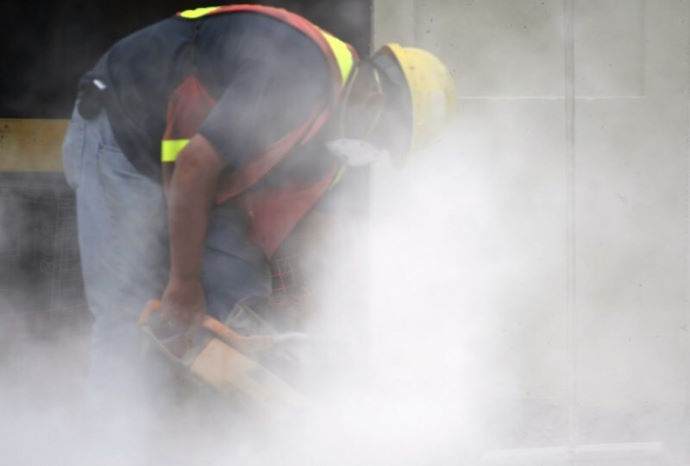
Picture: Arrive Alive
Inhaling dust over a couple of days or months can have consequences to first responders, particularly those working in a medical or health and safety role.
For workers that deal with this hazard, it must be noted that inhaling dust over many years can cause.
- Irritation of the eyes
- Fibrosis (hardening of the lungs, making it difficult to breathe)
- Cancer of the lungs, abdomen, and nose.
- There is also the added risk of fire or explosion where dust is allowed to build up – either in the air or in extraction ducting.
- Even flour used for baking can explode when it is in a dust form, suspended in the air. This makes the whole area unsafe.
Medical staff have been taught that dust can contain particles ranging widely in size, and it is the size and chemical nature of particles that determine the nature and severity of any ill effects on the body listed below.
- Effects on the nervous system
- Allergic reactions such as hay fever or more
- Serious reactions such as asthma.
Dust is a respiratory hazard. The particles can be breathed in and irritate the upper and lower airway and lungs, which can result in breathing difficulty. There could also depend on the source of the dust be a toxin in the dust, which can further affect the lungs and airway and can lead to further illnesses. This could be in the short or long term.
If you didn’t know, house dust is one of the most common triggers for asthma.
Minimizing Dust Production and Dust Suppression
Prevent dust from getting into the air by:
- Spraying water on the workpiece before cutting, pouring material, etc.
- Spraying water on the ground before sweeping. If wet-sweeping is not possible, use a vacuum.
- Using a dust collector for tools or equipment if available.
Consider different ways of doing a job that could reduce the amount of dust created. For instance, you could.
- Use low-speed rather than high-speed grinders
- Order concrete blocks in various sizes to minimize the need for cutting
- Use pre-mixed cement or mortar
- Shorten the distance that material is dropped or tossed when pouring or shovelling dusty materials
- Stand opposite the direction of the dust cloud.
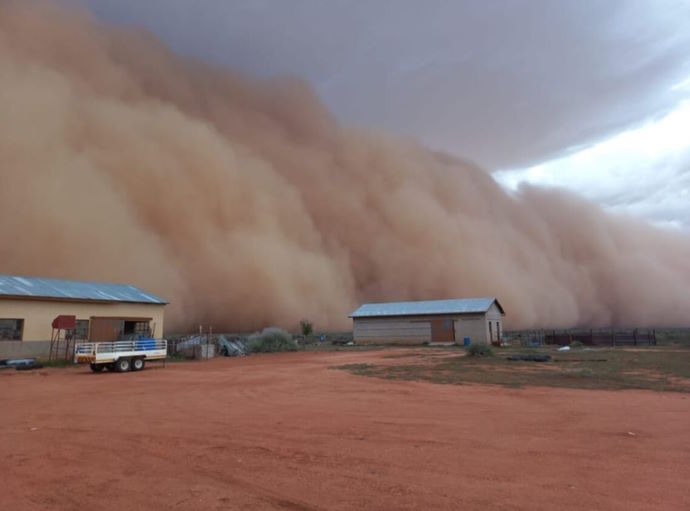
Picture: Arrive Alive
If dust is causing itchy eyes, nose and skin – wash well with water and if symptoms persist seek medical attention.
For general workers, remove the victim from the source of dust and immediately call for an ambulance.
The most important measure an emergency worker can take is to first remove the patient from the source of dust as trying to properly assess or treat a patient would not help in such an environment.
Removing the patient from the area, to limit exposure would properly have the greatest effect on treatment by a layperson.
Medical personnel would also assess the patient. Most likely administer oxygen and provide supportive, symptomatic treatment
Also remember that there may be lots of dust on the patients’ clothes, depending on the incident.
Visit Arrive Alive for more information and health safety tips.
Follow us on social media for more travel news, inspiration, and guides. You can also tag us to be featured.
TikTok | Instagram | Facebook | Twitter
ALSO READ: As flooding subsides, Kruger National Park is reopening camps









